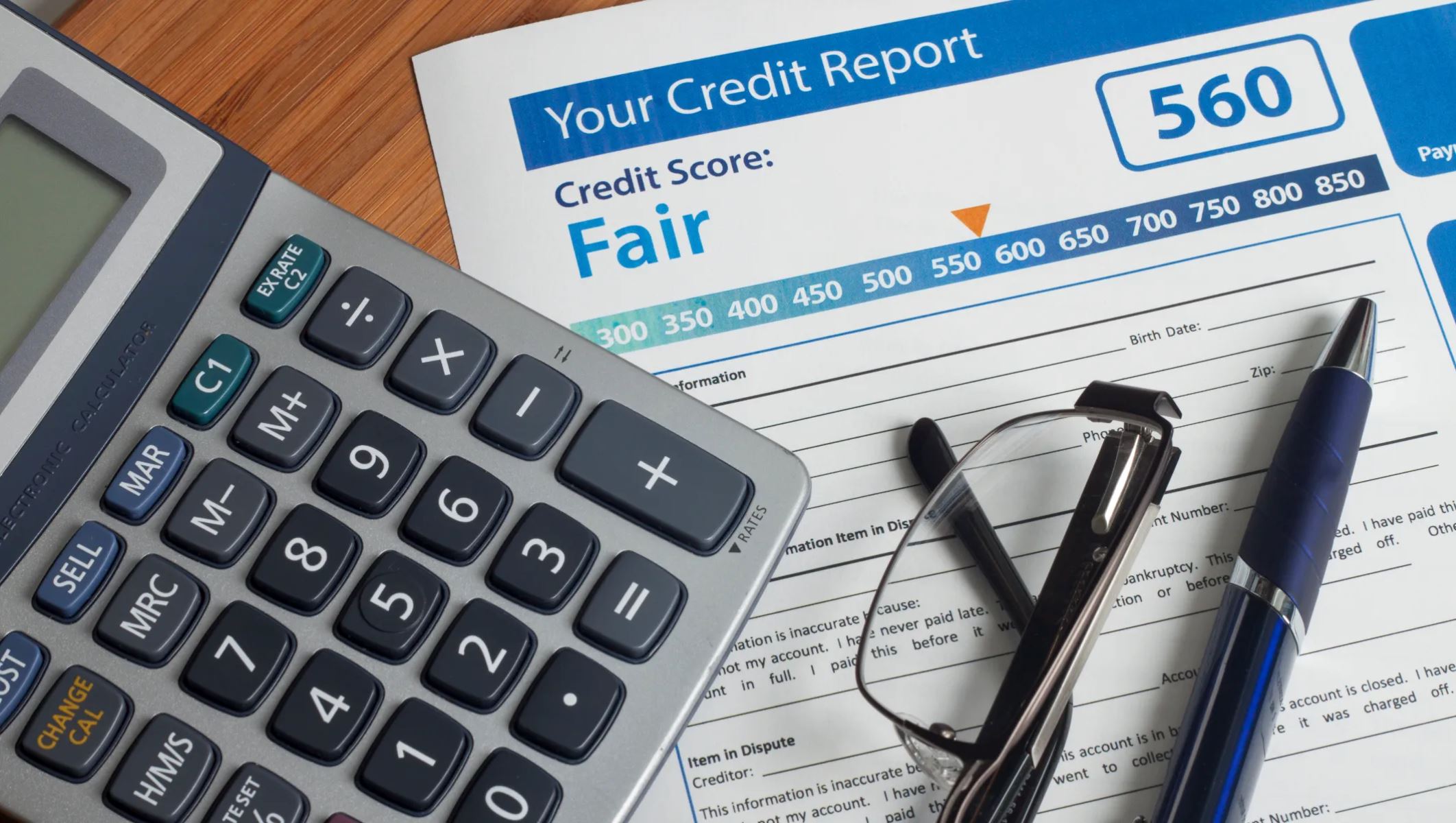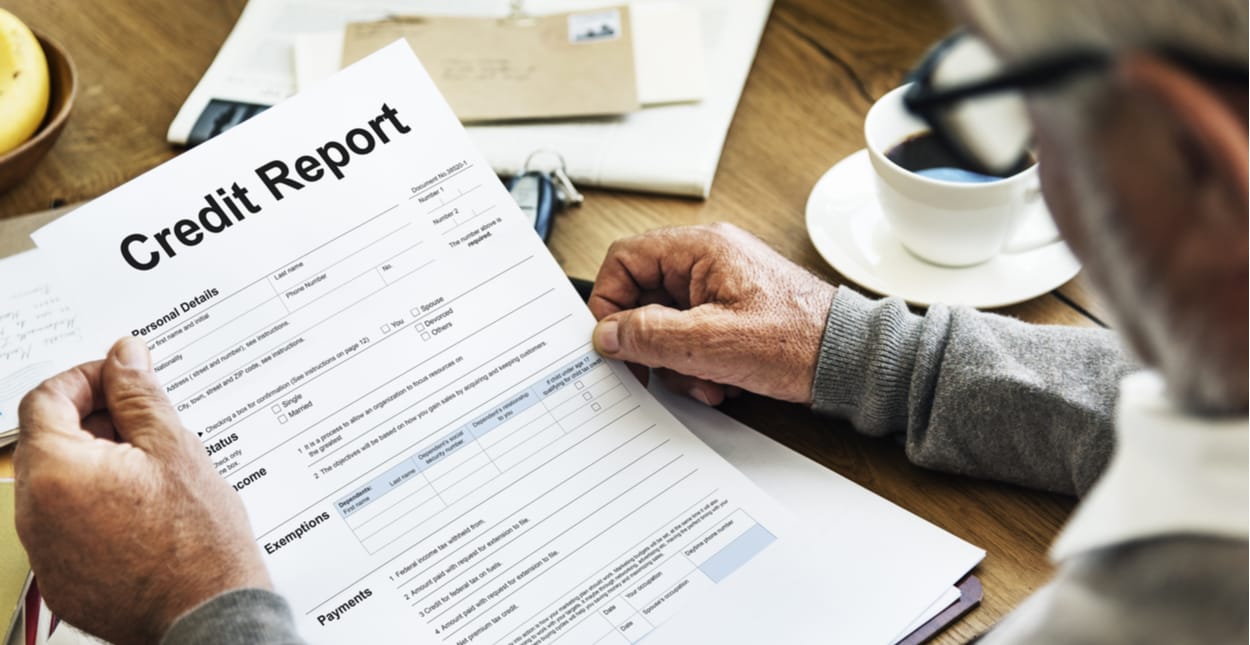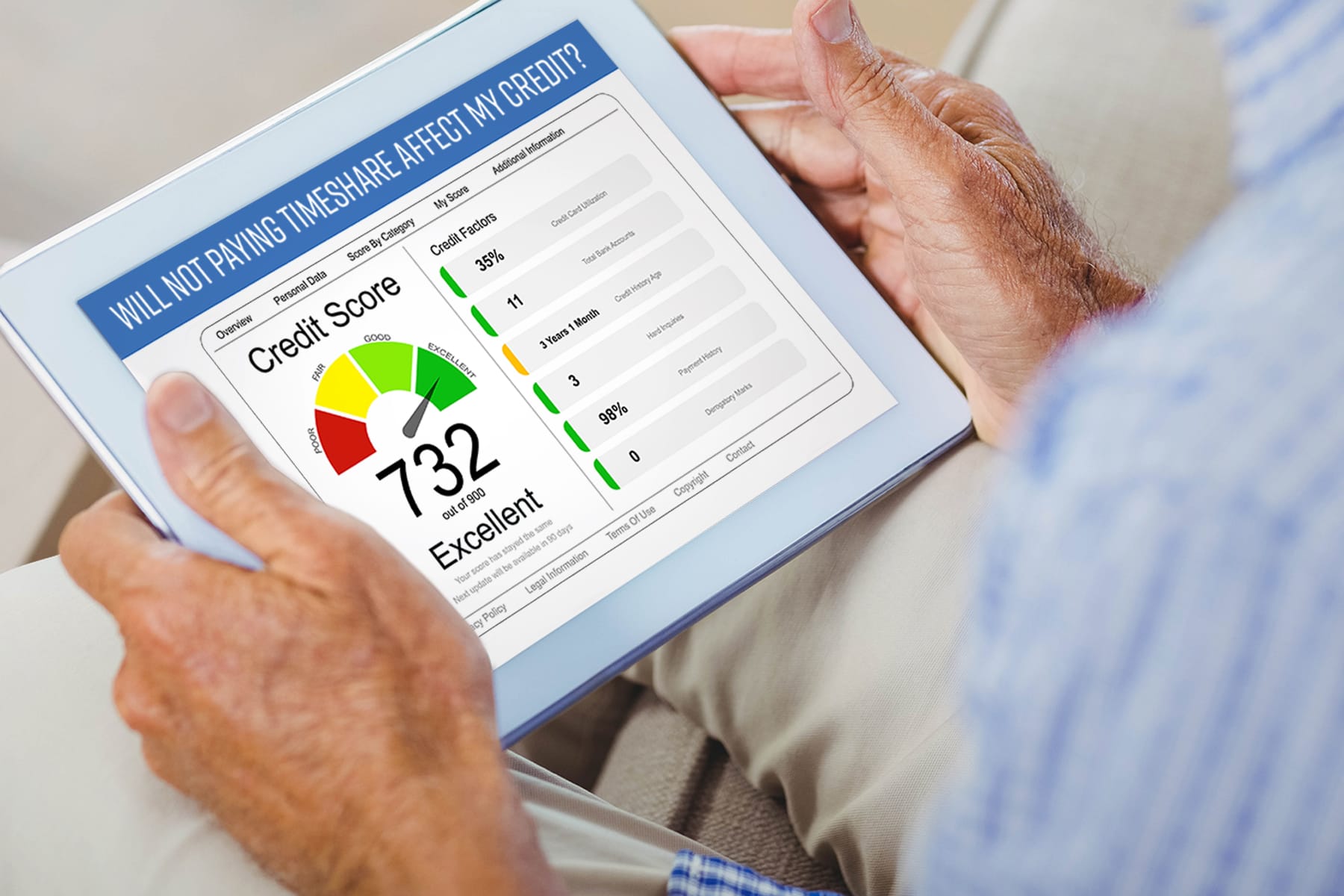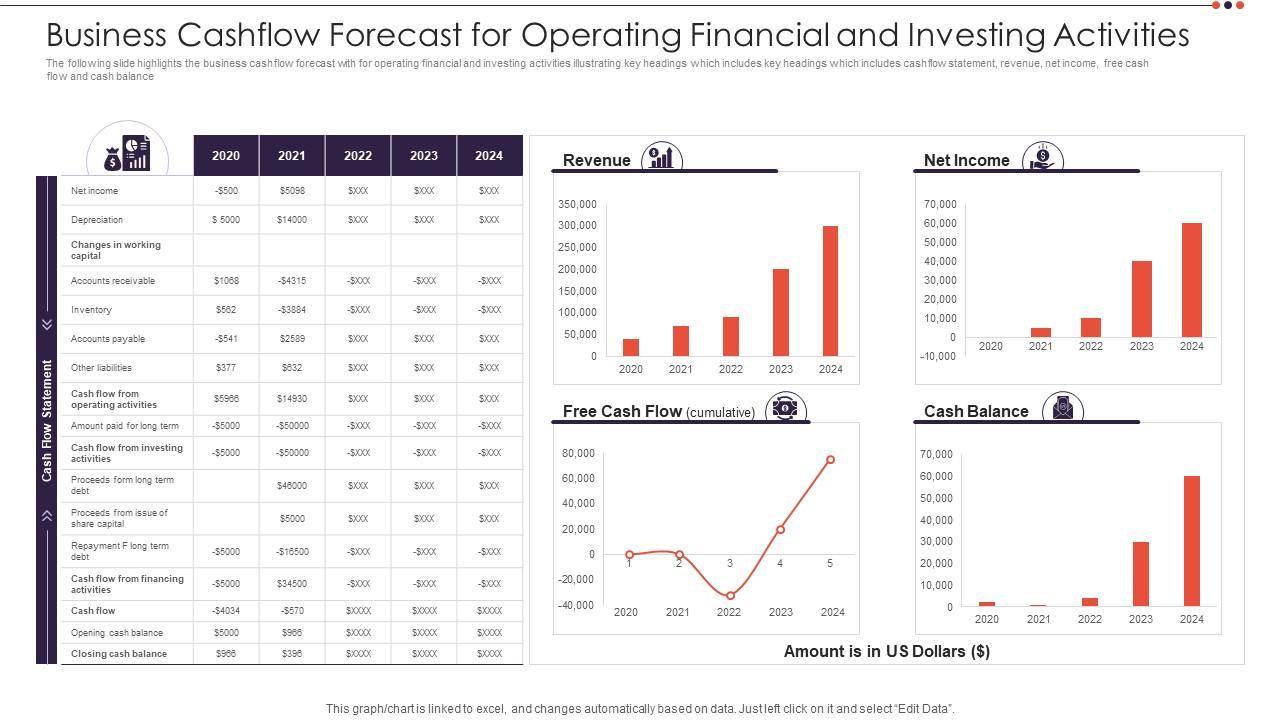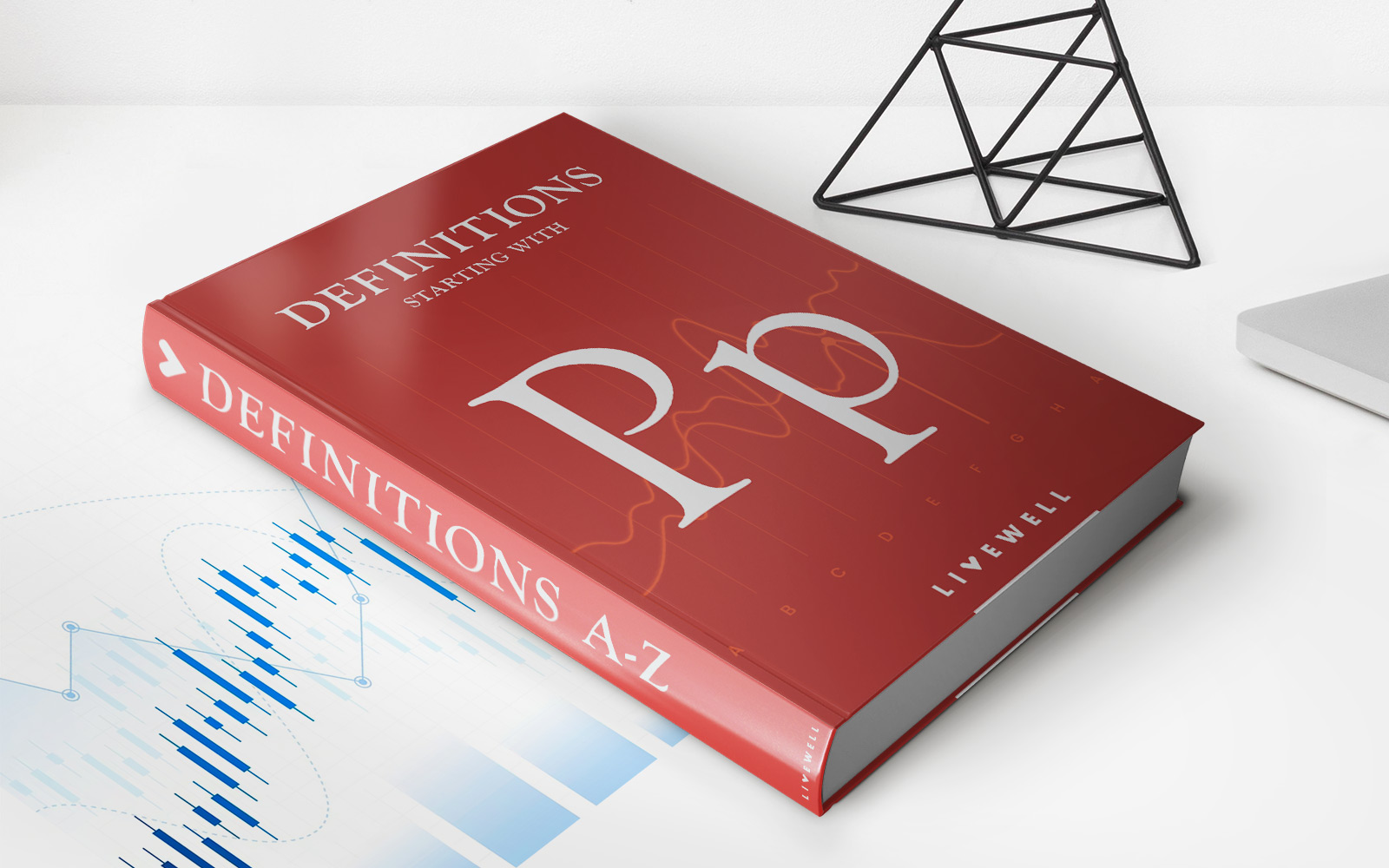

Finance
How To Remove Student Loans From Credit Report
Published: October 20, 2023
Looking for ways to improve your credit report? Learn how to remove student loans from your credit report and take control of your finances.
(Many of the links in this article redirect to a specific reviewed product. Your purchase of these products through affiliate links helps to generate commission for LiveWell, at no extra cost. Learn more)
Table of Contents
- Introduction
- Understanding the Impact of Student Loans on Credit Reports
- Checking Your Credit Report for Student Loan Information
- Disputing Inaccurate Student Loan Entries on Your Credit Report
- Negotiating a Pay for Delete Agreement with the Lender
- Consolidating or Refinancing Your Student Loans to Improve Your Credit
- Exploring Loan Rehabilitation or Loan Consolidation Programs
- Utilizing Good Credit Habits to Offset the Impact of Student Loans
- Seeking Professional Help to Remove Student Loans from Credit Report
- Conclusion
Introduction
Having student loans can be a heavy burden, both financially and emotionally. Not only do they affect your current finances, but they also have a long-lasting impact on your credit report. Student loans, if not managed well, can lead to negative entries on your credit report, which in turn can lower your credit score and make it difficult to secure future loans or credit.
In this article, we will delve into the details of how student loans affect your credit report and provide effective strategies to remove or mitigate their impact. It’s important to note that removing student loans from your credit report is not an easy task, but with the right knowledge and proactive steps, it is possible to improve your credit score and financial standing.
We will explore various methods such as disputing inaccurate entries, negotiating pay-for-delete agreements with lenders, consolidating or refinancing your loans, utilizing loan rehabilitation or loan consolidation programs, and adopting good credit habits. We will also discuss when it might be necessary to seek professional help to remove student loans from your credit report.
It is worth mentioning that each individual’s situation may vary, and there is no guaranteed solution that works for everyone. However, by understanding the options available and taking proactive steps, you can improve your credit report and regain control over your financial future.
So, let’s dive in and explore the strategies that can help you remove student loans from your credit report and pave the way towards financial freedom.
Understanding the Impact of Student Loans on Credit Reports
Before we dive into the strategies to remove student loans from your credit report, it’s crucial to understand how these loans impact your credit in the first place. Student loans, like any other type of debt, are reported to credit bureaus, and their presence on your credit report can significantly impact your credit score and overall creditworthiness.
Student loans are considered installment loans, and how they are handled can have a direct impact on your credit. Here are some key factors to consider:
- Payment History: Your payment history plays a vital role in determining your credit score. Late or missed payments on your student loans can have a negative impact, leading to a lower credit score. It’s crucial to make your payments on time to maintain a positive credit history.
- Credit Utilization: Student loans contribute to your overall credit utilization ratio, which is the amount of credit you are currently using compared to your total credit limits. Keeping your credit utilization ratio low is essential for maintaining a good credit score.
- Length of Credit History: The length of time you have had student loans can also impact your credit score. Having a longer credit history can demonstrate your ability to handle debt responsibly, resulting in a potentially higher credit score.
- Default or Delinquency: If you default on your student loans or become delinquent, the impact on your credit score can be severe. A default can stay on your credit report for up to seven years, significantly impacting your ability to secure future credit.
It’s essential to monitor your credit report regularly to ensure that your student loan information is accurate and up-to-date. Errors or discrepancies in reporting can negatively impact your credit score. Checking your credit report at least once a year allows you to identify any inaccuracies and take appropriate steps to address them.
Now that we have a better understanding of how student loans impact your credit report, let’s explore effective strategies to remove or mitigate their negative impact.
Checking Your Credit Report for Student Loan Information
One of the first steps in addressing student loan entries on your credit report is to thoroughly review your credit report to identify any inaccuracies or discrepancies. By checking your credit report, you can ensure that all student loan information is being reported accurately, including loan balances, payment history, and account status.
Here’s how you can check your credit report for student loan information:
- Obtain a Copy of Your Credit Report: You are entitled to a free copy of your credit report from each of the three major credit bureaus—Equifax, Experian, and TransUnion—once every 12 months. Visit AnnualCreditReport.com to request your free credit report.
- Review Your Credit Report: Carefully review each section of your credit report, paying close attention to the student loan accounts listed. Check for any discrepancies or errors in reporting, such as incorrect loan balance, missed or late payments that weren’t actually late, or any accounts that don’t belong to you.
- Note Inaccurate Entries: If you come across any inaccurate or questionable information related to your student loans, make a note of it. This could include incorrect loan amounts, misreported payment history, or accounts that you don’t recognize.
- File a Dispute: If you find any inaccuracies, you can initiate a dispute with the credit bureau that issued the report. Contact the credit bureau directly and provide them with the necessary documentation to support your dispute. They are legally obligated to investigate and correct any errors or inaccuracies on your credit report.
- Follow Up and Monitor: After filing a dispute, follow up with the credit bureau to ensure that the necessary corrections have been made. Continue to monitor your credit report regularly to ensure that the student loan information is accurately reported going forward.
Checking your credit report for student loan information is a crucial step in removing any erroneous or inaccurate entries. By doing so, you can ensure that your credit report reflects the most accurate and up-to-date information, minimizing any negative impact from student loans.
Disputing Inaccurate Student Loan Entries on Your Credit Report
If you come across inaccurate student loan entries on your credit report, it’s essential to take immediate action and dispute these errors. Disputing inaccurate information is your right as a consumer and can help in improving your credit report. Here are the steps to follow when disputing inaccurate student loan entries:
- Gather Documentation: Collect all relevant documentation that supports your claim of inaccuracy. This may include loan statements, payment receipts, correspondence with the loan servicer, or any other evidence that proves the error.
- Write a Dispute Letter: Craft a clear and concise dispute letter to the credit bureau that reported the inaccurate information. Include your personal information, details of the error, and supporting documentation. Make sure to keep a copy of the letter for your records.
- Submit the Dispute: Send the dispute letter, along with the supporting documentation, to the credit bureau via certified mail with a return receipt. This ensures that you have proof of the dispute being sent.
- Wait for Investigation: The credit bureau is required to investigate your dispute within 30 days of receiving it and provide you with a written response. They will contact the creditor reporting the information and request verification of the entry. If the creditor cannot verify the accuracy of the information, the credit bureau must remove it from your credit report.
- Review the Response: Once you receive a response from the credit bureau, carefully review it to see if the inaccurate information was removed or corrected. If the dispute is resolved in your favor, the credit bureau will update your credit report and send you an updated copy.
- If the Dispute is Not Resolved: If the credit bureau does not resolve the dispute in your favor, you can escalate the matter further. You can provide additional evidence to support your claim or consider seeking legal advice to explore other options for disputing the inaccurate information.
It’s important to note that disputing inaccurate student loan entries can be a time-consuming process. However, it is crucial to be persistent and ensure that your credit report accurately reflects your financial history. By successfully disputing and removing inaccurate information, you can improve your credit score and enhance your overall creditworthiness.
Negotiating a Pay for Delete Agreement with the Lender
If you have legitimate student loan entries on your credit report that are negatively impacting your creditworthiness, one option to consider is negotiating a pay for delete agreement with the lender. A pay for delete agreement is a legal arrangement where you offer to pay off a portion or the entire debt in exchange for the lender removing the negative information from your credit report. Here’s how you can navigate this negotiation process:
- Review Your Finances: Assess your financial situation and determine how much you can afford to pay towards the debt. This will help you determine the amount you can propose in the negotiation.
- Contact the Lender: Reach out to the lender or loan servicer who reported the student loan entries on your credit report. Explain your willingness to resolve the debt and propose a pay for delete agreement. Ensure that you have a written record of all communication with the lender.
- Negotiate the Terms: During the negotiation process, you can propose a settlement amount that is less than the total amount owed. The lender may counteroffer or suggest alternative options. It’s important to remain firm but reasonable during the negotiation process.
- Get the Agreement in Writing: Once both parties have agreed to the terms, ensure that you receive a written agreement from the lender. The agreement should clearly state that the lender will remove the negative entries from your credit report upon receipt of the agreed-upon payment.
- Make Payment: Once you have the written agreement, make the agreed-upon payment to the lender. Ensure that you keep records of the payment, such as bank statements or receipts, as evidence of fulfilling your part of the agreement.
- Follow Up with the Lender: After making the payment, follow up with the lender to ensure they have received it. Ask them to confirm the removal of the negative entries from your credit report as per the agreement.
- Monitor Your Credit Report: Keep an eye on your credit report in the following weeks and months to ensure that the negative entries have been removed. If they haven’t been removed, remind the lender of the agreement and request immediate action.
It’s important to note that not all lenders may be willing to enter into a pay for delete agreement. It is at their discretion to accept or reject such offers. However, it is worth pursuing this option as it can have a significant positive impact on your credit report and overall creditworthiness.
Remember to approach the negotiation process professionally and respect the lender’s decision. By providing a clear and reasonable proposal, you increase the chances of reaching a favorable agreement and ultimately improving your credit report.
Consolidating or Refinancing Your Student Loans to Improve Your Credit
If you’re looking for ways to improve your credit and manage your student loans more effectively, consolidating or refinancing your loans can be a viable option. These strategies allow you to streamline your loan repayment and potentially improve your credit in the following ways:
- Simplified Repayment: When you consolidate or refinance your student loans, you combine multiple loans into one new loan. This simplifies your repayment process, as you only need to make one monthly payment instead of multiple payments to different lenders.
- Potential Lower Interest Rate: If you have high-interest loans, refinancing can help you secure a lower interest rate. A lower interest rate can result in more affordable monthly payments and potentially save you money over the life of the loan.
- Extended Repayment Term: Consolidation or refinancing can also allow you to extend the repayment term of your loans. This can lower your monthly payment amount, making it easier to manage your finances and reduce the risk of missed or late payments.
- Improved Debt-to-Income Ratio: By consolidating or refinancing your loans, you can potentially improve your debt-to-income ratio. A lower ratio signifies that you have less outstanding debt compared to your income, which can boost your creditworthiness in the eyes of lenders.
- Building Positive Payment History: Through consolidation or refinancing, you have the opportunity to establish a new loan account. By making consistent, on-time payments, you can start building positive payment history, which is a significant factor in credit scoring models.
- Potential Removal of Negative Entries: If you successfully consolidate or refinance your loans, the previous individual loan entries may be marked as paid in full or closed on your credit report. This can help in removing or mitigating the negative impact caused by multiple open loan accounts or delinquencies associated with them.
Before consolidating or refinancing your loans, it’s important to carefully consider the terms, interest rates, and repayment options offered by different lenders. Research and compare the options available to ensure that the new loan aligns with your financial goals and helps improve your credit situation.
It’s important to note that consolidating or refinancing student loans will result in a new loan being issued and may involve fees or additional costs. Be sure to fully understand the terms and potential implications before making a decision.
By consolidating or refinancing your student loans, you can simplify your repayment process, potentially lower your interest rate, and improve your overall credit profile. It’s a strategic approach that can help you take control of your debt and work towards better financial stability.
Exploring Loan Rehabilitation or Loan Consolidation Programs
If you’re struggling to manage your student loan payments and looking to improve your credit, exploring loan rehabilitation or loan consolidation programs may offer a way forward. These programs can provide you with alternative repayment options and potentially help improve your credit in the following ways:
- Loan Rehabilitation: Loan rehabilitation is a program that allows borrowers to get their student loans out of default by making a series of on-time, consecutive monthly payments. Successfully completing the rehabilitation program can help remove the default status from your credit report, which can positively impact your credit score.
- Loan Consolidation: Loan consolidation combines multiple federal student loans into a single loan with a new repayment term. This simplifies the repayment process and can make it easier to manage your loans. By consolidating your loans, you can potentially improve your credit by eliminating the negative impact of multiple loan entries on your credit report.
- New Repayment Plans: Both loan rehabilitation and loan consolidation programs offer new repayment plans that may be more manageable for your financial situation. These plans can lower your monthly payment amount and decrease the risk of missed or late payments, which can help improve your credit score over time.
- Elimination of Collection Fees: By entering into loan rehabilitation or consolidation programs, any collection fees associated with defaulted loans may be eliminated or reduced. This can help you pay off your loans more efficiently and reduce the financial burden.
- Re-establishing Positive Payment History: By successfully completing a loan rehabilitation program or adhering to a new repayment plan through consolidation, you have the opportunity to re-establish a positive payment history. Consistently making on-time payments can demonstrate your improved financial responsibility and positively impact your credit score.
- Access to Forgiveness Programs: In some cases, joining a loan rehabilitation or consolidation program may make you eligible for certain loan forgiveness programs. For example, after making a certain number of qualifying payments, you could potentially qualify for Public Service Loan Forgiveness or other forgiveness programs, which can have long-term benefits for your credit and financial well-being.
When considering loan rehabilitation or consolidation programs, it’s crucial to research and understand the specific requirements of each program. Be aware of any potential fees, interest rates, and eligibility criteria. It’s also advisable to consult with a student loan counselor or financial advisor who can provide guidance based on your individual circumstances.
Exploring loan rehabilitation or loan consolidation programs can provide an opportunity to improve your credit, manage your loan payments more effectively, and pave the way towards financial stability. Take the time to evaluate these programs and determine which option is best suited to your needs and goals.
Utilizing Good Credit Habits to Offset the Impact of Student Loans
While managing student loans and their impact on your credit report can be challenging, implementing good credit habits can help offset the negative impact and improve your overall credit situation. By developing these habits, you can demonstrate financial responsibility and build a strong credit profile. Here are some essential credit habits to consider:
- Make Timely Payments: Pay all your bills, including student loan payments, on time. Late payments can have a significant negative impact on your credit score. Set up automatic payments or reminders to ensure you never miss a payment.
- Keep Utilization Low: Maintain a low credit utilization ratio, which is the percentage of available credit you are currently using. Aim to keep your utilization below 30% to showcase responsible credit management.
- Diversify Your Credit: Have a mix of different types of credit, such as credit cards, installment loans, and a mortgage if applicable. This demonstrates your ability to handle various types of credit responsibly.
- Avoid Opening Unnecessary Credit: Be cautious about opening new credit accounts unless necessary. Each application can result in a hard inquiry on your credit report, which can temporarily lower your credit score.
- Monitor Your Credit Regularly: Stay vigilant by regularly monitoring your credit report for any errors or suspicious activity. Promptly address any inaccuracies or fraudulent accounts to protect your credit.
- Manage Debt-to-Income Ratio: Keep your overall debt levels in check in relation to your income. A lower debt-to-income ratio demonstrates your ability to handle debt responsibly.
- Avoid Closing Old Accounts: Instead of closing old credit accounts, keep them open to maintain a longer credit history. The length of your credit history is a factor in determining your credit score.
- Limit New Credit Applications: Minimize the number of new credit applications you make, as each application can result in a hard inquiry and temporarily impact your credit score.
- Communicate with Lenders: If you’re facing financial difficulties, communicate with your lenders or loan servicers promptly. They may be able to provide alternative repayment options or assistance programs to help you manage your student loan debt more effectively.
By practicing good credit habits consistently, you can offset some of the negative impact of student loans on your credit report. Over time, these habits will help you build a positive credit history and improve your creditworthiness.
Remember, improving your credit is a gradual process. It requires adherence to good credit habits, patience, and persistence. Stay proactive in managing your credit, and you’ll gradually see the positive impact on your credit report.
Seeking Professional Help to Remove Student Loans from Credit Report
If you’re finding it difficult to remove student loans from your credit report or navigate the complex process on your own, seeking professional help may be a viable option. Credit repair companies and student loan counseling agencies have expertise in dealing with credit-related issues and can provide valuable assistance in improving your credit. Here’s how professional help can assist in removing student loans from your credit report:
- Credit Repair Companies: Credit repair companies specialize in identifying inaccuracies on your credit report and disputing them on your behalf. They have the knowledge and experience to navigate the dispute process effectively and may be able to remove incorrect or outdated student loan entries from your credit report.
- Student Loan Counseling Agencies: Student loan counseling agencies offer guidance and assistance specifically related to managing student loans. They can provide advice on loan repayment options, consolidations, and rehabilitation programs. They can also work with you to create a customized plan to improve your credit and effectively manage your student loan debt.
- Negotiation and Mediation: Professional help can alleviate the stress of negotiating with lenders. Credit repair companies and counseling agencies may have the expertise to negotiate with lenders on your behalf, potentially securing more favorable terms, settlements, or pay-for-delete agreements.
- Compliance with Regulations: Professional help ensures that the process is carried out within the bounds of the law. Credit repair companies and counseling agencies are knowledgeable about relevant laws and regulations, such as the Fair Credit Reporting Act (FCRA) and the Fair Debt Collection Practices Act (FDCPA), and can ensure that all steps taken to remove student loans from your credit report are compliant.
- Expert Guidance: By seeking professional help, you benefit from the guidance and expertise of individuals who deal with credit-related issues daily. They can provide personalized advice based on your specific situation and offer strategies that may not be readily apparent to individuals without specialized knowledge.
- Saves Time and Effort: Dealing with credit issues can be time-consuming and confusing. Seeking professional help allows you to focus on other aspects of your life while experts work toward improving your credit and navigating the complex process of removing student loans from your credit report.
When seeking professional help, it’s essential to research and choose reputable credit repair companies or student loan counseling agencies. Look for certified professionals and check their reviews, credentials, and track record of success. Beware of any fraudulent or deceptive practices and thoroughly review any contracts or agreements before signing.
Professional assistance can be a valuable resource in your journey to remove student loans from your credit report. It provides expertise, guidance, and support, allowing you to pursue the most effective strategies and increase the likelihood of success in improving your credit.
Conclusion
Managing student loans and their impact on your credit report can be a challenging and overwhelming task. However, with a proactive approach and the right strategies, it is possible to remove or mitigate the negative impact of student loans on your credit. By implementing the techniques discussed in this article, you can take steps towards improving your credit score and overall financial well-being.
Start by checking your credit report regularly to identify any inaccurate student loan entries. Dispute any errors you find and follow up with the credit bureaus to ensure that the necessary corrections are made. Consider negotiating a pay for delete agreement with your lender, as this can provide an opportunity to remove negative information from your credit report in exchange for payment.
Consolidating or refinancing your student loans can also play a significant role in improving your credit. By streamlining your loan repayment and potentially lowering your interest rates, you can make your payments more manageable and positively impact your credit profile.
Exploring loan rehabilitation or consolidation programs can provide alternative repayment options and help you get your student loans back on track. These programs may also eliminate or reduce collection fees and give you the opportunity to re-establish positive payment history.
Additionally, utilizing good credit habits can help offset the impact of student loans. Make timely payments, keep your credit utilization ratio low, and maintain a diverse mix of credit accounts. By practicing responsible credit management, you can establish a strong credit profile and mitigate the negative effects of student loans on your credit report.
If you find the process overwhelming or need expert guidance, consider seeking professional help from credit repair agencies or student loan counseling agencies. These professionals can provide valuable insights, negotiate on your behalf, and ensure compliance with legal regulations.
Remember, improving your credit takes time and dedication. Be patient and persistent in implementing these strategies, and gradually, you will see positive changes in your credit score and financial situation.
Take control of your student loans and credit report. By following the strategies and tips outlined in this article, you can pave the way for a brighter financial future and regain control of your creditworthiness.





